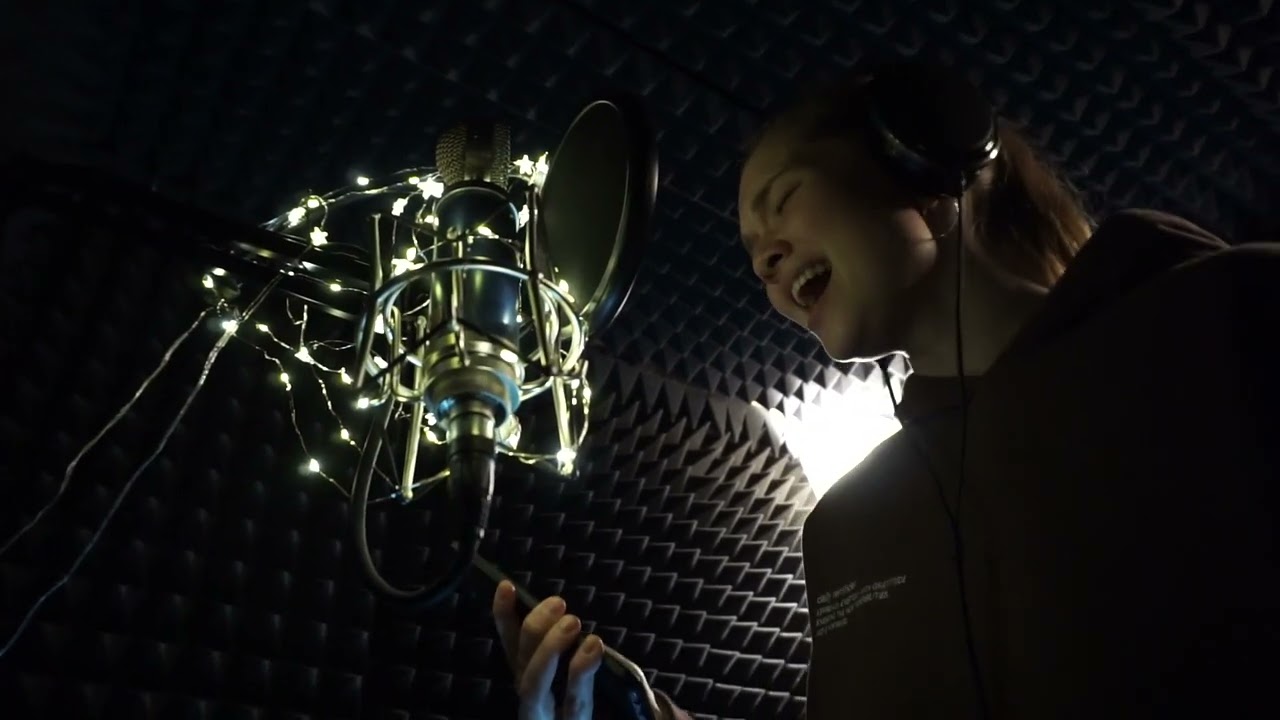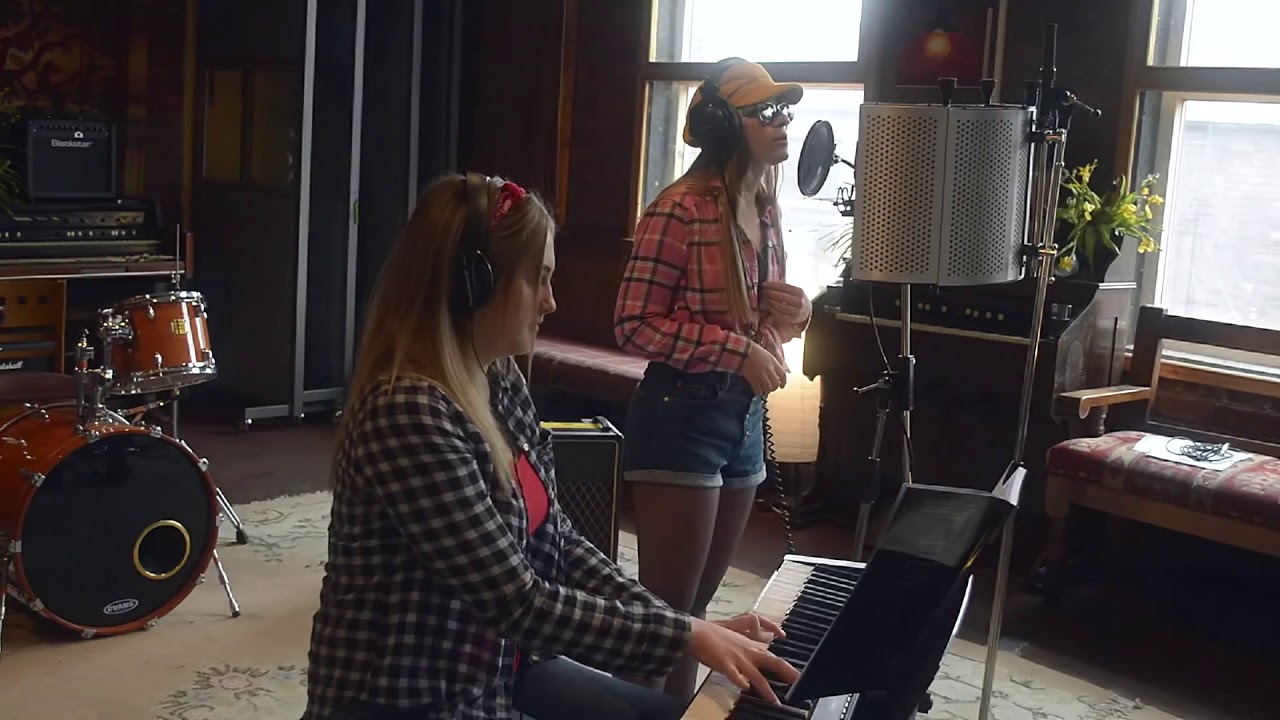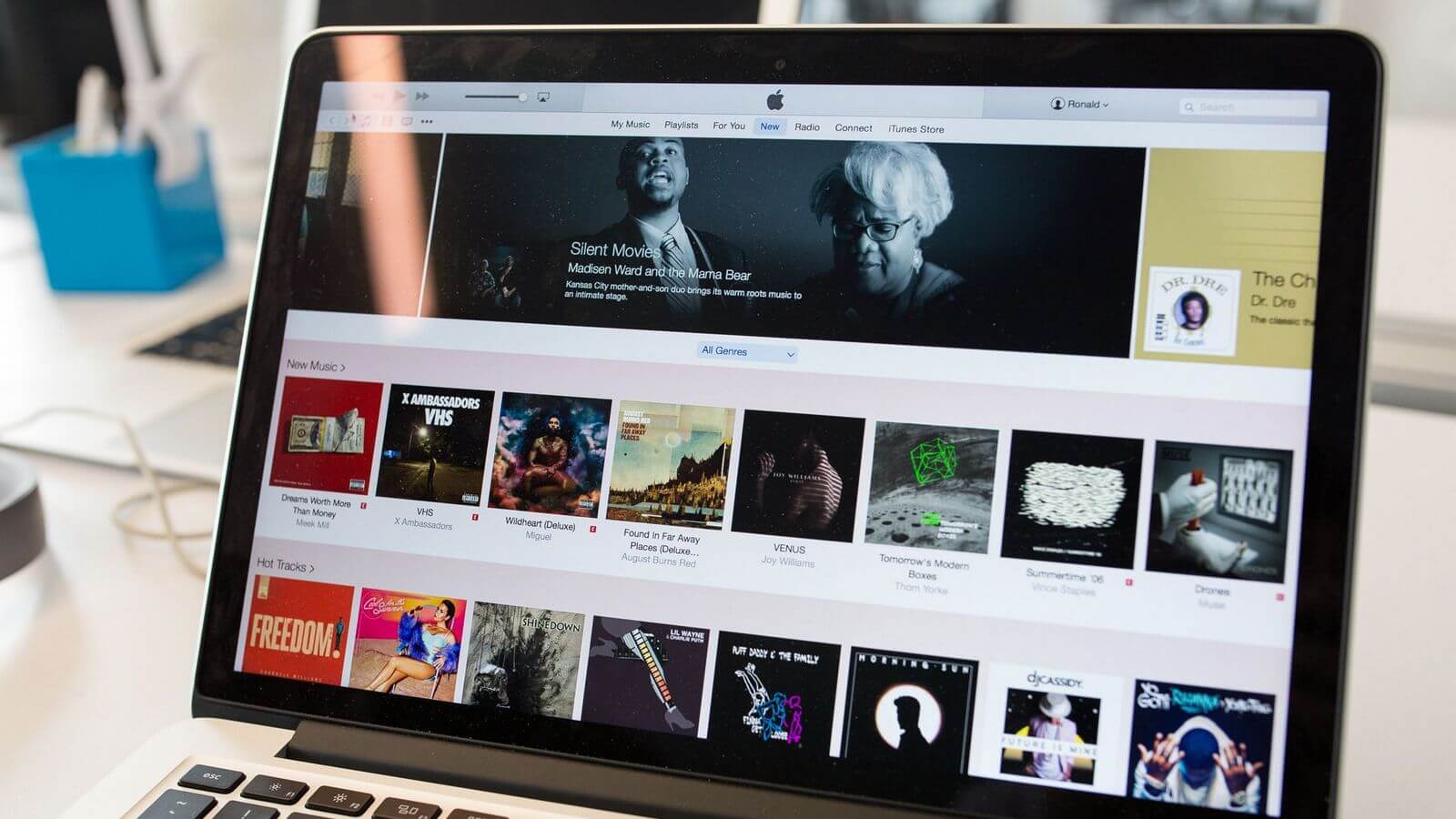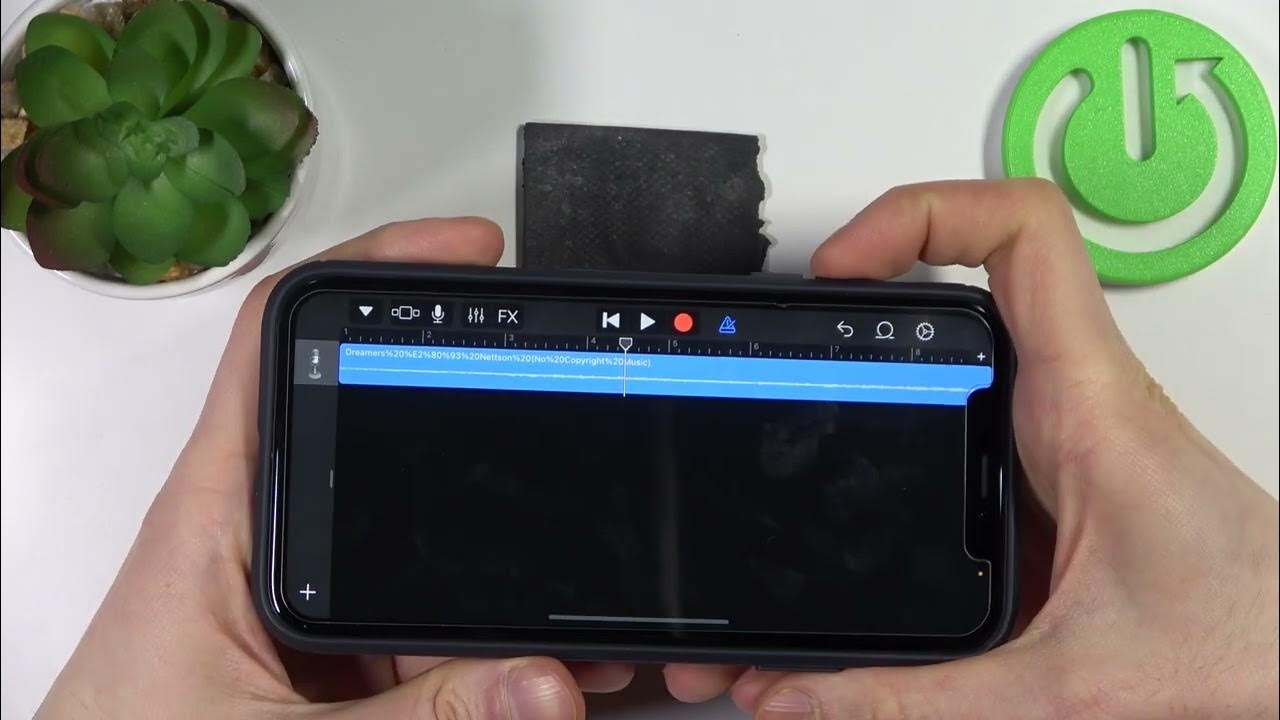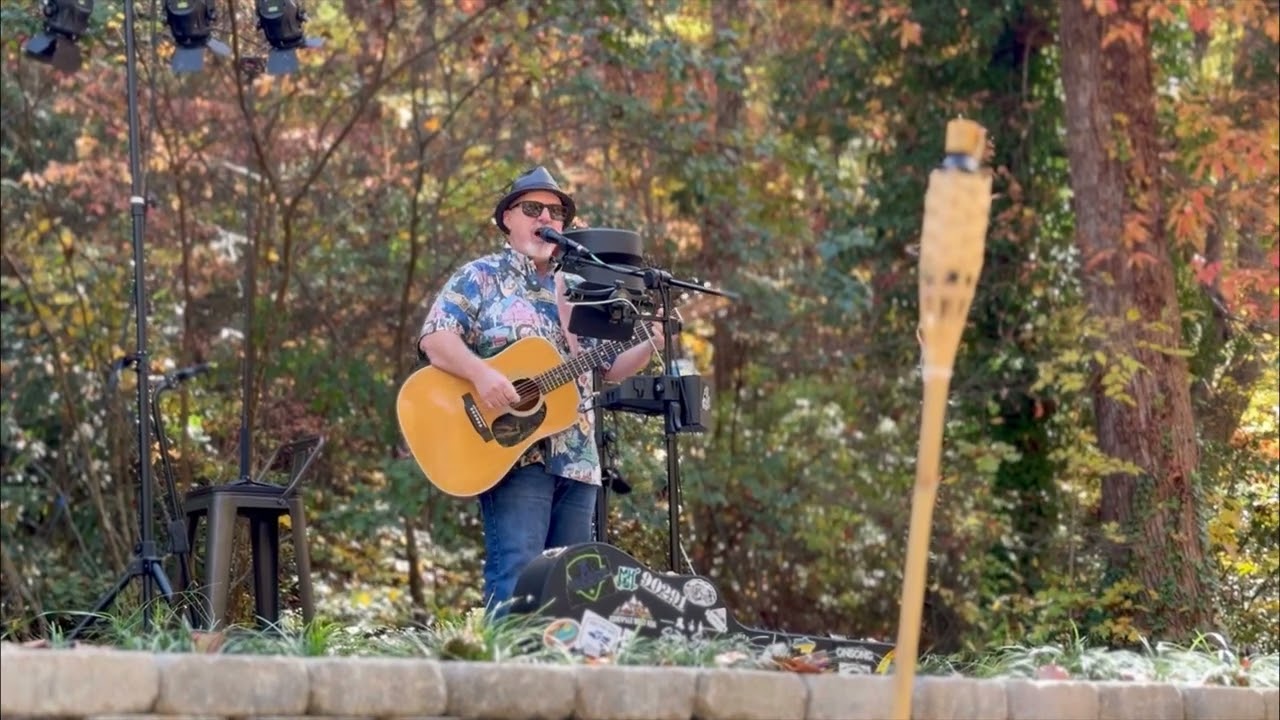Home>Production & Technology>Cover Song>How To Make Cover Song
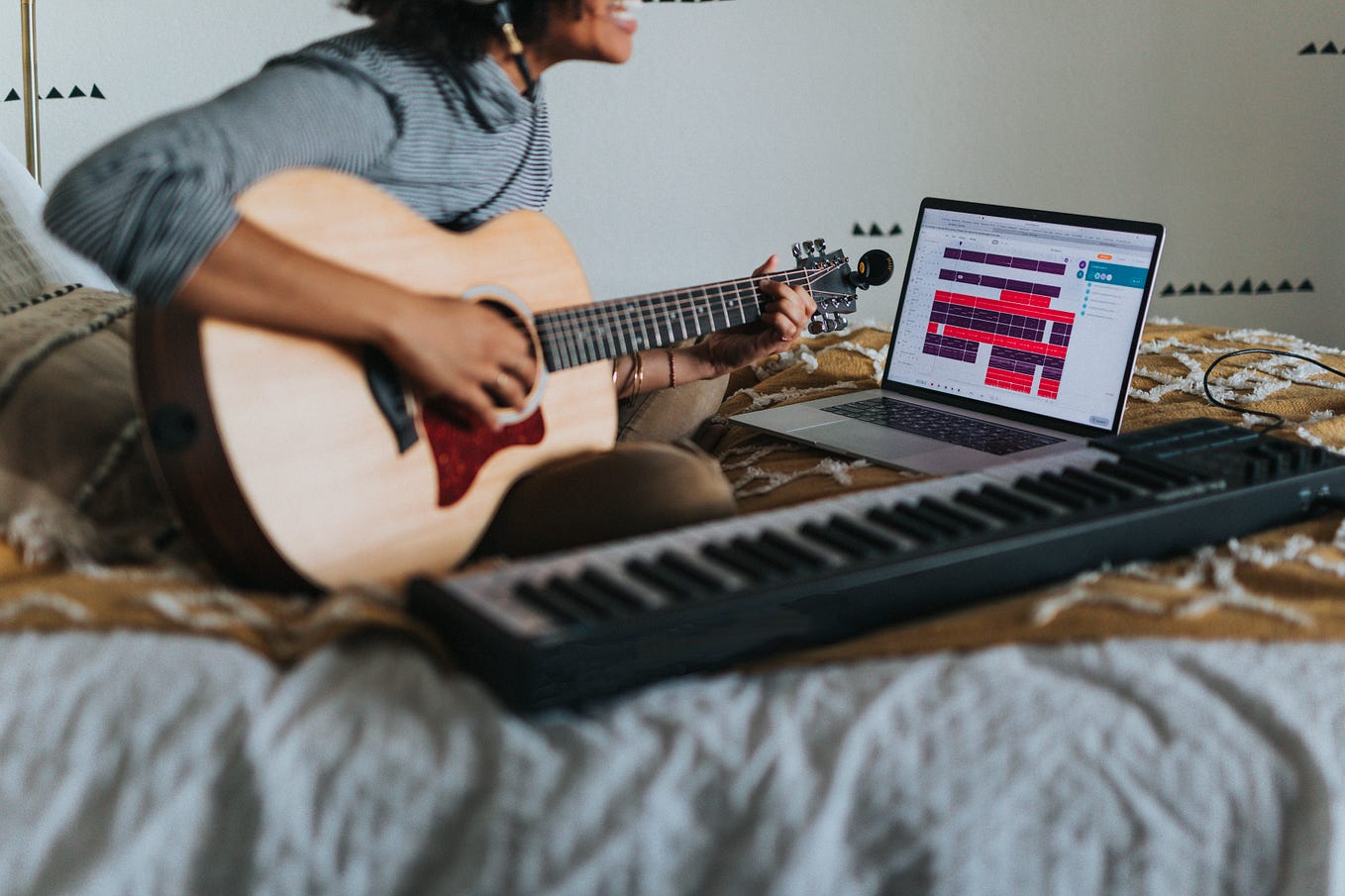

Cover Song
How To Make Cover Song
Modified: January 22, 2024
Learn how to make a cover song that stands out. Get tips on selecting the right song, arranging it, and adding your own unique twist. Become a master of cover songs today!
(Many of the links in this article redirect to a specific reviewed product. Your purchase of these products through affiliate links helps to generate commission for AudioLover.com, at no extra cost. Learn more)
Table of Contents
Introduction
Cover songs have a magical ability to captivate audiences and breathe new life into familiar melodies. Whether it’s a heartfelt acoustic rendition or a bold reinterpretation, cover songs have the power to evoke emotions and create a connection with listeners. If you are a musician or a band looking to showcase your talent, recording and releasing a cover song can be a great way to gain recognition and expand your fanbase.
In this article, we will explore the process of creating a cover song and provide valuable insights on how to make your cover song stand out from the rest. From choosing the right song to understanding copyright laws, from rearranging the track to recording and releasing it, we will cover every step of the journey.
Before we dive into the nitty-gritty details, it’s important to note that while cover songs can be a wonderful artistic expression, it is crucial to respect copyright laws and obtain the necessary permissions before releasing a cover. This ensures that the original creators are appropriately credited and compensated for their work.
Now, let’s embark on this exciting journey of creating a captivating cover song that will resonate with your audience and leave a lasting impression.
Choosing the Right Song
The first step in creating a memorable cover song is selecting the right track. While it may be tempting to choose a popular or well-known song, it’s important to consider several factors before making a decision.
1. Personal Connection: Choose a song that resonates with you on a personal level. Whether the lyrics speak to your emotions or the melody strikes a chord, a genuine connection with the song will enhance your performance and allow you to add your unique touch.
2. Genre Compatibility: Consider the genre of music you typically perform and choose a song that aligns with your artistic style. While it can be exciting to experiment with different genres, it’s also important to maintain a cohesive sound that your existing fanbase will appreciate.
3. Uniqueness: Look for songs that offer an opportunity for reinterpretation and innovation. A unique arrangement or a fresh take on a classic can make your cover stand out from the rest and grab the attention of listeners.
4. Audience Appeal: Take into account the preferences of your target audience. If you’re trying to attract new fans, consider selecting a well-known song that has mass appeal. On the other hand, if you have a dedicated fanbase, they may appreciate a deeper cut or a lesser-known gem.
5. Licensing Considerations: Ensure that the song you choose is not restricted by any licensing issues. Some songs may require additional permissions or may not be available for cover without special arrangements. Familiarize yourself with the copyright laws and seek professional advice if needed.
Remember, the goal of choosing the right song is to showcase your artistic abilities and leave a lasting impact on your listeners. Trust your instincts, listen to your heart, and select a song that will allow you to shine as an artist.
Understanding Copyright Laws
When creating a cover song, it’s essential to have a solid understanding of copyright laws to ensure that you are operating within legal boundaries and respecting the rights of the original artist or songwriter. Here are some key points to consider:
1. Obtain Permissions: In most cases, you need to obtain permission from the copyright owner or the relevant music publisher before recording and releasing a cover song. This is typically done through obtaining a mechanical license, which allows you to reproduce the song in your own version. The process and requirements for obtaining permissions may vary depending on your location and the specific song, so it’s advisable to consult a music attorney or licensing agency for guidance.
2. Pay Royalties: Along with obtaining the necessary permissions, you will also be required to pay royalties to the original songwriter or music publisher. The royalties are usually paid through a mechanical licensing agency such as the Harry Fox Agency in the United States. These royalties ensure that the original creators are compensated for the use of their work.
3. Acknowledge Original Songwriters: When releasing a cover song, it’s important to give proper credit to the original songwriters. This can be done through clear and accurate songwriting credits on the cover song release, including the names of the original songwriters and their publishing information. Failing to provide proper credit can lead to legal issues and damage your reputation as an artist.
4. YouTube Content ID: If you plan on sharing your cover song on platforms like YouTube, be aware of Content ID systems that automatically identify copyrighted content. The system may flag your cover song and result in a copyright claim or a revenue share with the original rights holders. Understand the policies and guidelines of the platforms you use to ensure compliance.
Remember, respecting copyright laws is not only legally required, but it also shows integrity and respect for the work of other artists. It’s always better to seek proper permissions and pay the necessary royalties to ensure a smooth and legal release of your cover song.
Reinterpreting the Song
One of the most exciting aspects of creating a cover song is the opportunity to put your own unique twist on the original composition. By reinterpreting the song, you can showcase your creativity and make it truly your own. Here are some tips on how to effectively reinterpret a song:
1. Change the Tempo and Mood: Experiment with altering the tempo and overall mood of the song. For example, you can take a fast-paced pop tune and transform it into a mellow acoustic ballad or vice versa. This change can breathe new life into the song and introduce a fresh perspective.
2. Explore Different Genres: Consider exploring different genres and styles to give the song a unique flavor. For instance, you can convert a rock anthem into a jazz rendition or a country hit into a reggae-infused version. Mixing genres can add an exciting and unexpected element to your cover song.
3. Modify the Instrumentation: Experiment with different instruments or change the arrangement to create a distinctive sound. Adding or removing certain instruments, such as substituting electric guitars with strings or incorporating electronic elements, can provide a fresh take on the song.
4. Focus on Vocals: Your vocal performance is a vital aspect of reinterpreting a song. Explore different vocal techniques, such as changing the vocal range, delivery style, or harmonies. This can add a new dimension to the song and showcase your vocal versatility.
5. Embrace Artistic Interpretation: Don’t be afraid to infuse your personal emotions and experiences into the song. Connect with the lyrics and try to bring your own unique perspective to the story being told. This authenticity will shine through your performance and resonate with listeners.
Remember, the goal of reinterpreting a song is to add your own artistic touch while still maintaining the essence and recognizable elements of the original composition. Be bold, experiment, and let your creativity flow to create a cover song that is distinctive and captivating.
Creating the Arrangement
The arrangement of a cover song plays a crucial role in transforming it into a unique and engaging rendition. Here are some key steps to consider when creating the arrangement:
1. Identify Key Elements: Listen closely to the original song and identify its key elements, such as the melody, chord progressions, and instrumental hooks. These elements will serve as a foundation for your arrangement.
2. Determine the Mood and Energy: Decide on the overall mood and energy you want to convey through your cover song. This will help you make decisions regarding the tempo, dynamics, and instrumentation.
3. Experiment with Instrumentation: Explore different instruments and sounds to bring a fresh perspective to the song. Consider adding or removing instruments from the original arrangement to create a unique sonic experience. Experimentation can include using acoustic instruments for a more intimate feel or incorporating electronic elements to add a modern touch.
4. Reconstruct the Chord Progressions: Try experimenting with different chord voicings or substitutions to create a new harmonic structure, while still maintaining the underlying essence of the song. This can help give your cover song a fresh and unique sound.
5. Focus on Dynamics: Pay attention to the dynamics within the arrangement. Build up tension and release it through variations in volume, intensity, and instrumentation. This can add a dynamic and captivating element to your cover.
6. Incorporate Breaks and Solos: Consider adding instrumental breaks or solos to showcase the talents of individual band members. This can provide a refreshing break in the song and add an element of excitement and improvisation.
7. Arrange Vocal Harmonies: Experiment with vocal harmonies to enhance the overall texture and depth of the cover. This can involve adding harmonies to complement the lead vocals or creating unique vocal arrangements that differ from the original song.
Remember, the purpose of creating the arrangement is to infuse your own artistic vision and style into the cover song. Be creative, take risks, and explore different possibilities to create an arrangement that is memorable and showcases your musical prowess.
Recording the Cover Song
Once you have finalized the arrangement of your cover song, it’s time to move on to the recording process. Here are the key steps to consider when recording your cover:
1. Prepare Your Equipment: Ensure that your recording equipment is set up properly. This includes microphones, instruments, headphones, and any necessary audio interfaces. Make sure everything is in good working condition to capture high-quality sound.
2. Choose a Recording Space: Select a suitable recording space that minimizes unwanted background noise and provides good acoustics. Consider using a dedicated home studio or a professional recording studio if available.
3. Capture Instrument Tracks: Begin by recording the instrument tracks one by one. This allows you to focus on the details of each part and ensure a clean recording. Use the arrangement as a guide and record each instrument separately to have more control during the mixing process.
4. Record Vocals: Once the instrument tracks are laid down, it’s time to record the vocals. Set up the microphone in a comfortable position and experiment with distance and positioning to achieve the desired sound. Focus on capturing a passionate and emotive performance that enhances the essence of the song.
5. Take Multiple Takes: Record multiple takes of each instrument and vocal part. This provides you with options during the editing and mixing phase and allows you to choose the best performances for your final mix. Don’t be afraid to experiment and try different approaches to capture the best possible sound.
6. Pay Attention to Detail: Listen carefully for any mistakes or imperfections in the recordings. Take the time to fix minor issues, such as tuning or timing errors, using editing tools or re-recording specific parts if necessary. Paying attention to these details ensures a polished and professional-sounding final product.
7. Mix and Edit: Once all the tracks are recorded, it’s time to mix and edit the cover song. This involves balancing the levels of each instrument and vocal, adding effects, adjusting EQ, and creating a cohesive sound. Take your time to fine-tune the mix and ensure that every element works together harmoniously.
Remember, the recording process is a crucial step in capturing the essence and uniqueness of your cover song. Take the time to record each part meticulously, paying attention to details and striving for excellence, to create a professional and captivating recording that represents your artistic vision.
Mixing and Editing
Once all the tracks have been recorded for your cover song, the next step is to mix and edit them to create a polished and cohesive final product. Here are some essential steps to consider during the mixing and editing process:
1. Organize and Label Tracks: Start by organizing your tracks in the digital audio workstation (DAW) software and labeling them appropriately. This will make it easier to navigate and edit the different elements of your cover song.
2. Balance the Levels: Adjust the volume levels of each track to achieve a balanced and clear sound. Make sure that no instrument or vocal is overpowering the others. Pay attention to the dynamics and ensure that important elements stand out while supporting elements blend harmoniously in the mix.
3. EQ and Compression: Use EQ (equalization) to shape the frequency balance of individual tracks and make them sit well together. Remove any unwanted frequencies or enhance important characteristics of each sound. Apply compression to control the dynamic range of the instruments and vocals, ensuring a consistent and controlled audio performance.
4. Add Effects: Experiment with adding effects such as reverb, delay, and chorus to enhance the texture and spatial qualities of the mix. Use effects tastefully to create depth and dimension, but be careful not to overload the mix with excessive processing.
5. Create Panning and Stereo Field: Utilize panning to position sound elements in the stereo field and create a sense of width and depth. This can help create a more immersive listening experience and make the mix feel more three-dimensional.
6. Editing: Use editing tools to fine-tune the timing and length of each track. This includes editing out any unwanted noise, silences, or mistakes, as well as tightening up the performance for a professional sound. Pay attention to details and ensure seamless transitions between sections.
7. Mastering: The final step in the mixing and editing process is mastering. This involves applying the final touches to the overall mix, such as adding overall EQ and compression, adjusting the stereo image, and ensuring the optimal loudness and clarity of the song. Mastering helps to make the cover song sound cohesive and compatible with other commercial releases.
Remember, the mixing and editing process is a critical step in creating a high-quality cover song. Take your time, trust your ears, and pay attention to the details to ensure that your cover song sounds professional, cohesive, and ready for release.
Designing the Artwork
Creating eye-catching artwork is an important aspect of presenting your cover song to the world. The artwork serves as the visual representation of your music and can greatly influence the perception of your song. Here are some tips for designing compelling artwork for your cover song:
1. Understand the Theme and Mood: Familiarize yourself with the theme and mood of your cover song. Take inspiration from the lyrics, melody, or overall atmosphere to create artwork that complements and captures the essence of your music.
2. Consider the Target Audience: Keep your target audience in mind when designing the artwork. Consider their preferences, age demographic, and aesthetic sensibilities to create artwork that will resonate with them and pique their interest.
3. Choose Engaging Imagery: Select imagery that is visually stimulating and helps convey the message of your cover song. This can be a photograph, illustration, or graphic that evokes the desired emotions and captures the essence of your music.
4. Typography and Font Selection: Choose fonts and typography that align with the mood and theme of your song. The typography should be legible and complement the design. Experiment with different fonts to find the perfect balance between readability and artistic expression.
5. Color Palette: Select a color palette that enhances the overall look and feel of the artwork. Consider the emotions and associations different colors evoke and choose colors that align with the mood and theme of your music. Be mindful of the visual impact and ensure that the colors work well together.
6. Composition and Layout: Pay attention to the composition and layout of the artwork. Consider the placement of text, imagery, and other elements to create a visually appealing and balanced design. Experiment with different layouts and seek feedback from others to ensure a captivating final result.
7. Professional Quality: If you don’t have design skills yourself, consider outsourcing the artwork creation to a professional designer. High-quality artwork can greatly enhance the perceived value of your cover song and make a strong first impression on listeners.
Remember, the artwork is an important part of your cover song’s presentation. It is the visual representation of your music and can greatly impact the initial perception of your song. Put time and effort into creating compelling artwork that captures the essence of your music and resonates with your audience.
Releasing and Sharing the Cover Song
After all the hard work and creativity put into recording and designing your cover song, it’s time to release and share it with the world. Here are some steps to effectively release and share your cover song:
1. Choose a Distribution Platform: Consider using digital distribution platforms such as Spotify, Apple Music, and Amazon Music to make your cover song available to a wide audience. Research different platforms and choose the one that aligns with your goals and target audience.
2. Release Date and Pre-Save Campaign: Determine a release date for your cover song. Consider building anticipation by running a pre-save campaign, where listeners can save and be notified when the song is available. This can help generate momentum and excitement around the release.
3. Upload Cover Art and Metadata: Prepare your cover art and accurate metadata, including song title, artist name, track credits, and genre information. Make sure the cover art meets the required specifications for each platform to ensure a professional presentation of your cover song.
4. Promote on Social Media: Utilize social media platforms to promote your cover song. Create engaging posts, share behind-the-scenes content, and interact with your followers. Encourage your fans to share and engage with your cover song to expand your reach.
5. Engage with Online Communities: Connect with online communities and forums that share an interest in cover songs or your music genre. Participate in discussions, share your experiences, and provide value to the community. This can help increase awareness of your cover song and attract potential fans.
6. Collaborate with Influencers: Consider collaborating with influencers or content creators who have a relevant audience. They can help spread the word about your cover song and introduce it to their followers. Collaborative efforts can greatly expand your reach and introduce your music to new listeners.
7. Utilize YouTube: YouTube is a powerful platform for sharing cover songs. Create a visually appealing music video or static image video with your audio and upload it to your channel. Optimize the video description and tags to make it discoverable to potential viewers.
Remember, releasing and sharing your cover song is a crucial step in gaining exposure and connecting with your audience. Be strategic in your approach, engage with listeners, and leverage the power of social media and online communities to maximize the reach of your cover song.
Promoting the Cover Song
Promoting your cover song effectively is key to gaining visibility and reaching a wider audience. Here are some strategies to help you promote your cover song:
1. Create a Marketing Plan: Develop a comprehensive marketing plan to guide your promotional efforts. Determine your target audience, set clear goals, and outline the strategies and tactics you will use to promote your cover song.
2. Utilize Social Media: Leverage the power of social media platforms to promote your cover song. Share engaging content related to the song, such as teaser snippets, fun facts, or behind-the-scenes moments. Encourage your followers to share and engage with your posts to expand your reach.
3. Collaborate with Influencers: Collaborate with influencers or content creators who have an audience that aligns with your target demographic. They can help promote your cover song to their followers, increasing exposure and attracting new listeners.
4. Engage with Fans: Connect with your fans on a personal level. Respond to comments and messages, show appreciation for their support, and make them feel involved in your journey. Engaging with fans helps create a loyal community and generates positive word-of-mouth promotion.
5. Create Engaging Content: Apart from sharing the cover song itself, create additional content that is engaging and related to your cover song. This can include acoustic versions, behind-the-scenes videos, lyric videos, or even interviews discussing the creative process behind the cover.
6. Submit to Online Platforms and Playlists: Submit your cover song to music blogs, online platforms, and playlists that feature cover songs or your music genre. Research relevant platforms and submit your song for potential features, reviews, or playlist placements to gain exposure to new listeners.
7. Live Performances and Events: Consider performing your cover song live at gigs or events. This provides an opportunity to showcase your talent, connect with local audiences, and attract new fans who may be interested in checking out your recorded cover song.
8. Collaborate with Other Artists: Collaborate with other musicians or bands to create cover song mashups or duets. This not only helps promote your cover song to their audience, but also creates a unique musical experience that attracts attention and generates interest.
9. Utilize Email Marketing: Build an email list of your fans and send out newsletters or updates about your cover song release. Use this direct communication channel to keep your loyal fans informed and engaged with your music.
Remember, effective promotion involves a mix of online and offline strategies, engaging with your fanbase, and leveraging the power of social media and collaborations. Be consistent, creative, and focused in your promotional efforts to maximize the impact of your cover song.
Conclusion
Cover songs present an incredible opportunity for musicians and bands to showcase their talent, connect with listeners, and gain recognition in the music industry. By following the steps outlined in this article, you can create a compelling and captivating cover song that stands out from the rest. From choosing the right song to understanding copyright laws, from reinterpreting the song to recording and promoting it, each stage of the process plays a crucial role in the success of your cover song.
Remember to choose a song that resonates with you and your audience, ensuring that you obtain the necessary permissions and pay royalties to the original songwriters. Reinterpret the song in a way that showcases your creativity and unique style, creating a fresh and engaging rendition. Invest time in creating a professional recording, paying attention to the mix and edit to ensure a high-quality final product.
Design visually appealing artwork that captures the essence of your cover song and effectively promote your music through various channels, including social media, collaborations, and online platforms. Engage with your fans and create a strong connection with your audience.
Ultimately, creating a successful cover song requires passion, dedication, and a commitment to excellence. Stay true to your artistic vision and continue to explore and experiment with your style and sound. With the right combination of creativity, talent, and promotion, your cover song can become a powerful tool to showcase your abilities, attract new fans, and elevate your musical career.

